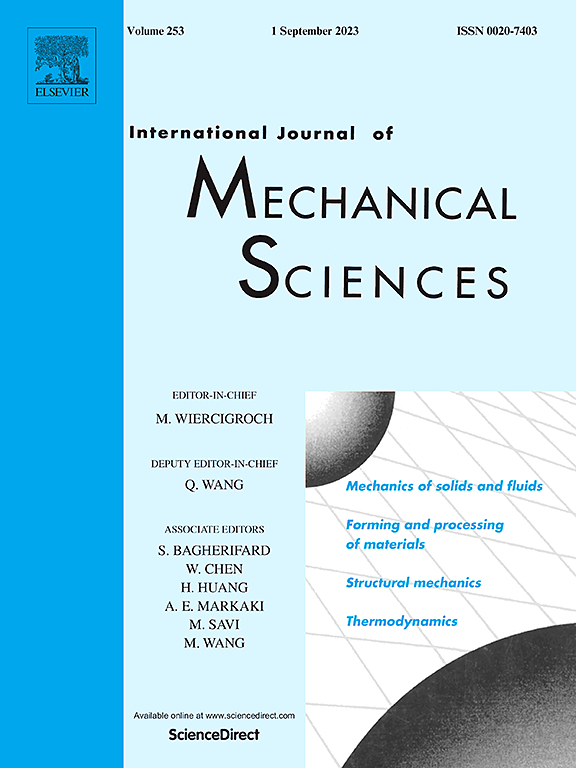Bioinspired acoustic meta-processor for enhancing physical and psychoacoustic functions
IF 7.1
1区 工程技术
Q1 ENGINEERING, MECHANICAL
International Journal of Mechanical Sciences
Pub Date : 2025-02-01
DOI:10.1016/j.ijmecsci.2025.109915
引用次数: 0
Abstract
The auditory system plays a crucial role in human interaction with the environment and daily communication. The unique structural regulation function of hair cells realizes the complex mechanical hearing function of the cochlea. Inspired by outer hair cells (OHCs), this paper proposes an iterative design method based on metamaterial frequency-amplitude regulation and presents a multi-function integrated meta-processor that could replicate both the auditory system's physical and psychoacoustic functions. The core functionality focuses on the bandpass filtering, rainbow trapping, and passive mechanical modulation characteristics of the broadband acoustic signals. The robustness and signal-to-noise ratio (SNR) of the signal capture process are effectively improved by masking effect, it can also achieve A-weighted modulation for sound waves to replicate psychoacoustic equal-loudness response. It is an extra signal modulator working simultaneously with digital modulation to improve the performances of the system. The flexibility of the number and response of sub-units makes the device suitable for a wide range of application scenarios. This work demonstrates the potential of pure passive metamaterial device processing in creating functional bionic devices with sophisticated processing functions, illustrating its promise for future advancements in voice interfaces and robotic interactions.

求助全文
约1分钟内获得全文
求助全文
来源期刊

International Journal of Mechanical Sciences
工程技术-工程:机械
CiteScore
12.80
自引率
17.80%
发文量
769
审稿时长
19 days
期刊介绍:
The International Journal of Mechanical Sciences (IJMS) serves as a global platform for the publication and dissemination of original research that contributes to a deeper scientific understanding of the fundamental disciplines within mechanical, civil, and material engineering.
The primary focus of IJMS is to showcase innovative and ground-breaking work that utilizes analytical and computational modeling techniques, such as Finite Element Method (FEM), Boundary Element Method (BEM), and mesh-free methods, among others. These modeling methods are applied to diverse fields including rigid-body mechanics (e.g., dynamics, vibration, stability), structural mechanics, metal forming, advanced materials (e.g., metals, composites, cellular, smart) behavior and applications, impact mechanics, strain localization, and other nonlinear effects (e.g., large deflections, plasticity, fracture).
Additionally, IJMS covers the realms of fluid mechanics (both external and internal flows), tribology, thermodynamics, and materials processing. These subjects collectively form the core of the journal's content.
In summary, IJMS provides a prestigious platform for researchers to present their original contributions, shedding light on analytical and computational modeling methods in various areas of mechanical engineering, as well as exploring the behavior and application of advanced materials, fluid mechanics, thermodynamics, and materials processing.
 求助内容:
求助内容: 应助结果提醒方式:
应助结果提醒方式:


